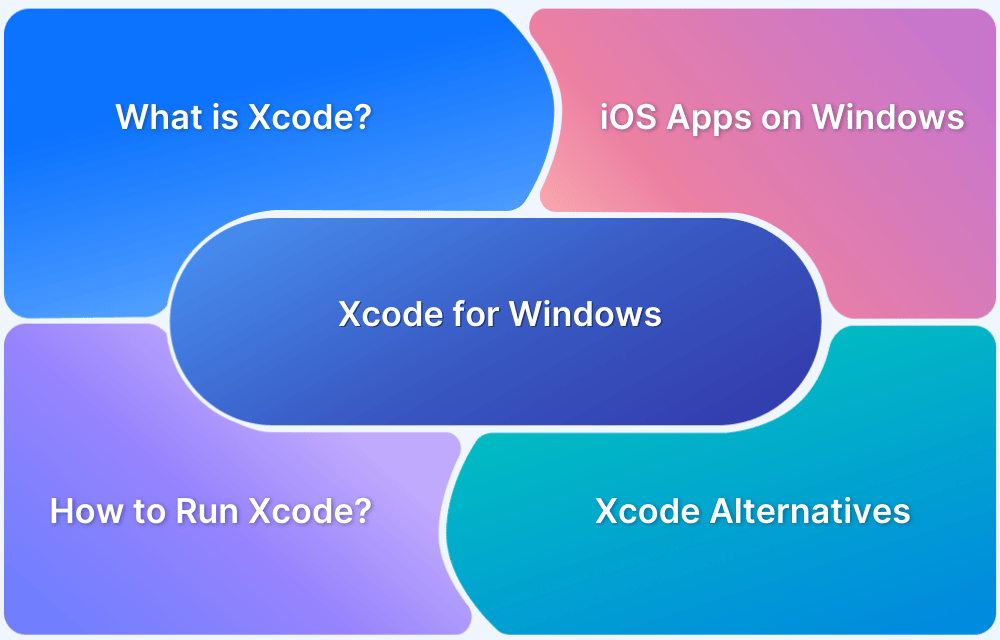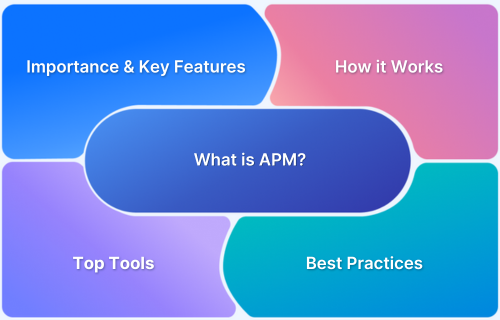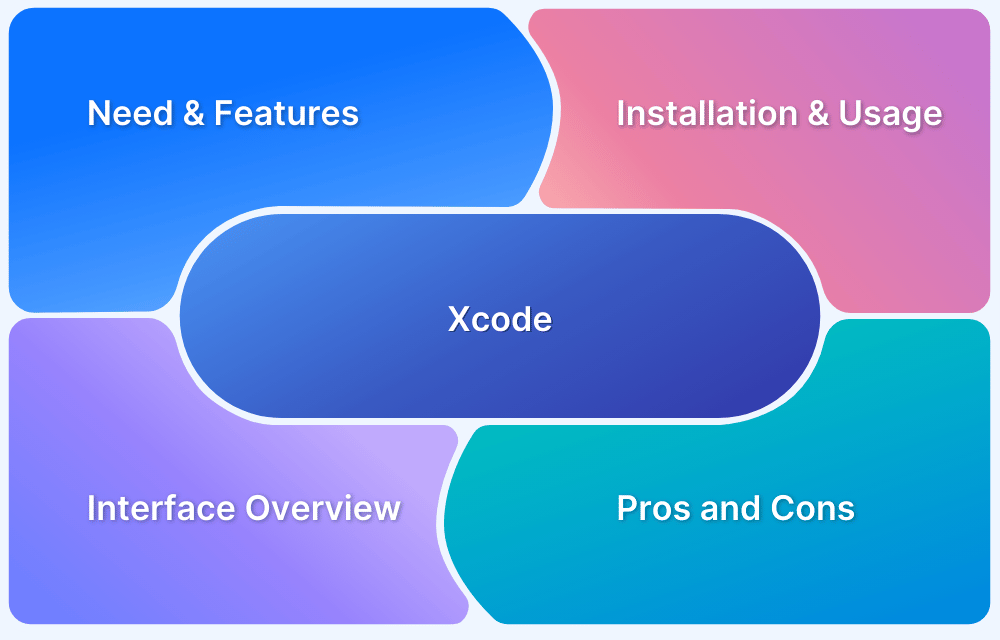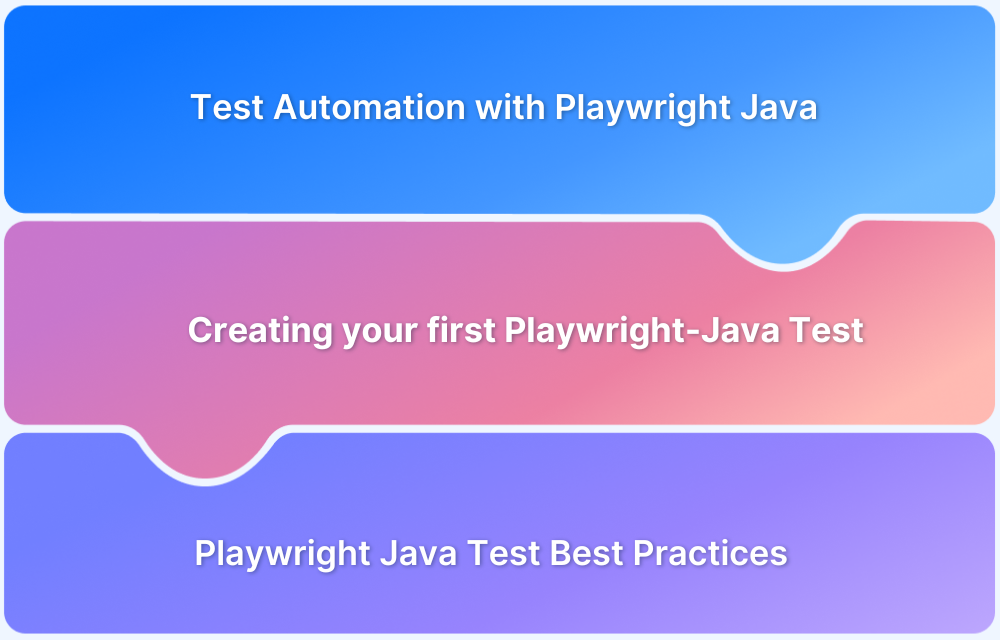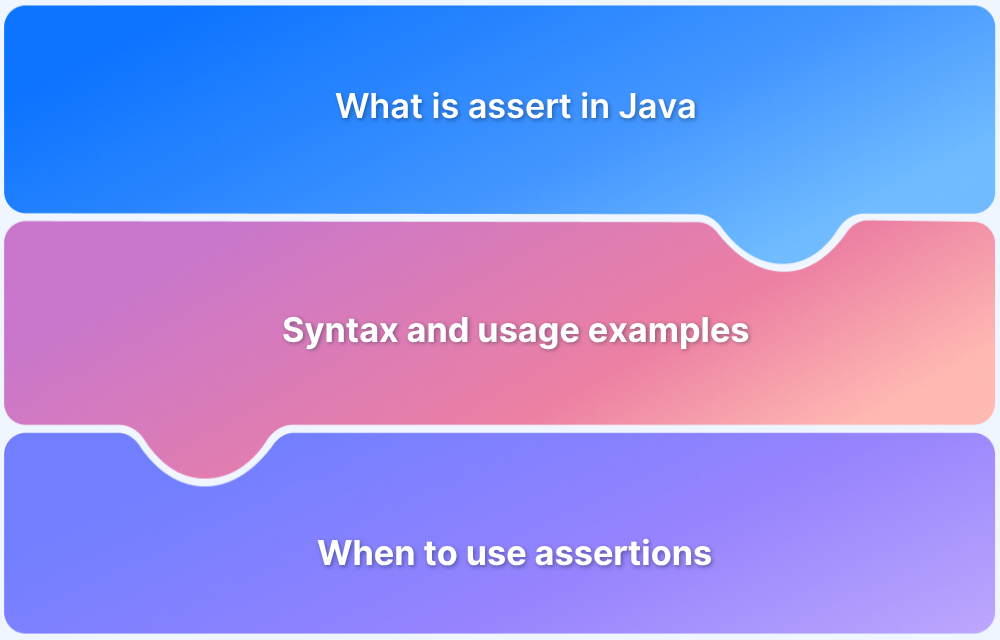iOS users demand flawless app performance-slow or unresponsive apps are swiftly uninstalled. With performance playing a key role in App Store rankings and user retention, comprehensive testing has become crucial to success.
Overview
Why iOS App Performance Testing Matters
- App Store Visibility: Performance affects ratings and discoverability.
- Revenue Impact: Sluggish apps lead to user churn, affecting in-app purchases.
- Brand Trust: A polished app builds credibility, while a buggy one harms it.
Challenges in iOS App Performance Testing
- Closed System Constraints: Limited access to system data.
- Hardware & OS Fragmentation: Different behaviors on various iOS versions and devices.
- App Store Performance Guidelines: Strict benchmarks enforced by Apple.
Top iOS App Performance Testing Tools in 2025
- BrowserStack SpeedLab: Real device testing for web/hybrid apps.
- Xcode Instruments: Built-in, powerful profiling tool for iOS app development.
- New Relic Mobile: APM for detailed monitoring in production.
This article covers the top iOS app performance testing tools in 2025, from Apple’s built-in profilers to advanced solutions like BrowserStack App Performance and BrowserStack SpeedLab.
Why iOS App Performance Testing Matters
iOS users are often early adopters with high expectations-any lag, crash, or glitch can lead to poor reviews or swift uninstalls. For developers and QA teams, performance isn’t just about speed-it’s about delivering a premium experience.
- App Store visibility: Performance issues can impact ratings, reducing discoverability.
- Revenue impact: Sluggish apps lead to user churn, directly affecting in-app purchases and subscriptions.
- Brand trust: A polished app builds credibility; a buggy one erodes it.
- Device diversity: From iPhone SE to iPhone 15 Pro Max, performance must be validated across screen sizes and chipsets.
- Real user conditions: Only testing on physical devices reveals thermal throttling, real user network variances, and battery drain-making platforms like BrowserStack SpeedLab essential.
Challenges in iOS App Performance Testing
iOS development may seem streamlined, but performance testing introduces unique technical hurdles. Understanding these challenges is key to delivering apps that meet Apple’s high standards.
1. Closed System Constraints: Apple’s ecosystem limits access to low-level system data unless using proprietary tools like Xcode Instruments. Third-party tools may lack visibility into CPU, GPU, and memory performance at the same granularity.
2. Hardware and OS Fragmentation: Despite fewer models than Android, iOS still spans multiple chipsets and OS versions. An app might behave differently on an iPhone 6s running iOS 14 than on an iPhone 15 with iOS 17. Device-specific lag, jank, or crashes must be accounted for.
3. App Store Performance Guidelines: Apple enforces strict performance benchmarks. Apps that feel unresponsive, exhibit frequent crashes, or consume too much battery risk rejection during the App Store review process.
Pro Tip: Platforms like BrowserStack App Performance offer real-device testing at scale, allowing QA teams to validate performance on the full range of supported iPhones and iPads-helping spot issues before they reach the App Store.
Key Metrics to Monitor During iOS Performance Testing
Effective performance testing for iOS apps requires tracking a range of metrics that reflect real-world usage. These indicators help developers understand how an app behaves under load, during daily use, and across devices.
- App Launch Time: Measures the time it takes for the app to become interactive after being opened. Slow launch times often lead to poor first impressions and increased abandonment rates.
- FPS (Frame Rate) and Jank: Consistent 60 FPS ensures smooth animations and interactions. Frame drops (jank) can signal rendering bottlenecks, particularly on older devices or during transitions.
- CPU and Memory Usage: High CPU or memory consumption can lead to overheating, lag, and eventual crashes. Monitoring these metrics helps detect inefficient operations and memory leaks.
- Battery Consumption: Apps that drain battery excessively face user backlash. This metric is especially important for background tasks and location-aware apps.
- Network Speed, Latency, and Request Failures: Network performance affects data loading, sync, and user flow. Test under different network conditions (3G, LTE, 5G) to simulate real environments.
- Crash Rate and App Stability: Stability is foundational. Tracking crash frequency, affected user percentage, and crash patterns provides insights into regression and reliability issues.
Pro Tip: Use BrowserStack App Performance to collect many of these metrics across real iOS devices during automated test runs. This ensures consistent monitoring across versions, screen sizes, and network environments.
Simulator vs Real Device Testing on iOS
When testing iOS app performance, it’s crucial to understand the limitations and strengths of simulators versus real devices.
Simulator Limitations
Simulators are useful for early-stage testing but lack the ability to replicate key performance conditions. They don’t simulate thermal behavior, battery drain, GPU usage, or real-world touch interactions.
This can lead to misleading performance benchmarks if used exclusively.
Use Cases for Simulators
Simulators are ideal for fast iteration during UI development and basic automation in early test cycles. They speed up development feedback loops but shouldn’t be used for final performance validation.
Why Real Device Testing is Critical?
Real devices replicate actual user environments-covering hardware-specific behavior, real network conditions, and native performance factors like animation lag and sensor. responsiveness.
Tools like BrowserStack SpeedLab and BrowserStack App Performance allow teams to test on iPhone and iPad models running various iOS versions to ensure accurate, production-grade performance insights.
Read More: Top 20 Performance Testing Tools in 2025
Top iOS App Performance Testing Tools in 2025
Here are some of the top iOS app performance testing tools:
1. BrowserStack SpeedLab
BrowserStack SpeedLab is a powerful tool designed to help developers assess the performance of mobile websites and hybrid applications on real iOS devices. By testing on actual devices, it ensures more accurate and realistic performance results, mimicking the real-world conditions that users will experience.
The platform provides key performance metrics such as Time to Interactive (TTI), First Contentful Paint (FCP), and Cumulative Layout Shift (CLS), which are essential for evaluating the user experience.
Key Features
- Real Device Testing: Test your website on real iOS and Android devices, ensuring accuracy and reliable results under actual user conditions.
- User-Centric Metrics: Measure key performance indicators like Page Load Time, First Contentful Paint (FCP), and Speed Index to assess user experience.
- Actionable Insights: Utilize tools like the Navigation Timing API and Filmstrip to identify bottlenecks and visualize load times.
- Real-Time Testing: Start live tests and troubleshoot issues immediately using HAR logs or BrowserStack Live.
- Cross-Browser Compatibility: Test across multiple browsers and devices to ensure consistent performance.
- Comprehensive Reports: Generate performance scores for mobile and desktop versions, helping to benchmark your site’s speed.
Pros:
- Tests on real devices, ensuring more accurate results.
- Provides important metrics for web-view or responsive apps.
Cons:
- Limited to web-view or hybrid apps in native shells.
- May lack deep analysis features for native iOS builds.
2. BrowserStack App Performance
BrowserStack App Performance provides developers with an intuitive platform to identify and resolve mobile app performance issues by simulating real-world conditions. It offers an all-in-one toolkit for profiling, debugging, and optimizing app performance on over 20,000 real devices. By using the platform, developers can track key user metrics and pinpoint bottlenecks to deliver better user experiences.
Key Features:
- App Profiling: Track key metrics like FPS, app & page load times, ANR rate, and device resource usage in real-time.
- Performance Report: Generate comprehensive performance audit reports, highlighting issues and enabling team collaboration.
- Interactive Debugging: Use session replay and correlated metric graphs to identify performance bottlenecks in user journeys.
- Performance Regressions: Auto-detect performance regressions by benchmarking app metrics against recommended standards.
- Real-World Simulation: Simulate real-user conditions such as varying network speeds (3G, 4G) and geolocation, testing on real devices.
- Complete Flexibility: Access a vast device cloud with over 20,000 real devices for both manual and automated testing.
Pros:
- Access to 3500+ real iOS devices.
- Supports CI integration for performance regression testing.
- Easy-to-use dashboard for tracking performance trends.
3. Xcode Instruments
Xcode Instruments is a comprehensive suite of performance profiling tools developed by Apple, designed to help developers optimize their iOS applications. It offers detailed insights into various performance metrics, including CPU usage, memory allocation, energy consumption, and network activity.
Xcode Instruments is integrated directly into Xcode, making it an indispensable tool for developers during the app development and debugging phases. It provides real-time performance monitoring, helping identify bottlenecks and inefficiencies that can impact the app’s performance and user experience.
Key Features:
- CPU Profiling: Tracks CPU usage across multiple threads and processes, helping developers pinpoint performance issues such as excessive CPU consumption or inefficient code execution.
- Memory Allocation: Monitors memory usage, identifying memory leaks, excessive memory consumption, or fragmentation that can lead to app crashes or slow performance.
- Energy Consumption: Measures the app’s energy consumption, providing insights into battery drain, which is crucial for optimizing mobile apps for long-lasting battery performance.
- Network Activity: Tracks network requests, response times, and data transfer rates to optimize app connectivity and minimize latency.
- Integration with Xcode: Fully integrated into Xcode, simplifying the profiling process during development and testing without needing third-party tools.
- Heap and Object Allocation: Allows deep analysis of memory allocation, helping detect unused or over-allocated objects that contribute to memory leaks and inefficiencies.
Pros:
- Free and built into Xcode.
- Comprehensive suite for profiling different aspects of app performance.
- Real-time performance monitoring.
Cons:
- Primarily simulator-based, limiting real-device testing.
- Not ideal for CI/CD without complex setup.
4. Firebase Performance Monitoring
Firebase Performance Monitoring is a powerful tool from Google that helps developers monitor the performance of their mobile apps in real-world usage conditions. It tracks various performance metrics such as app startup time, network request latency, and screen rendering speed to identify performance bottlenecks and optimize user experiences.
By integrating directly into Firebase, it also allows for seamless feedback and insights based on real user interactions, helping developers make>Appium is an open-source automation framework for testing mobile applications across multiple platforms, including iOS and Android. It allows developers to automate both UI and performance testing of native, hybrid, and mobile web apps.
Appium supports a wide range of programming languages and testing frameworks. Though primarily focused on UI testing, Appium can also be leveraged for performance testing, especially when integrated with other performance profiling tools.
Key Features:
- Cross-Platform Support: Appium allows developers to write tests that work across both iOS and Android platforms, reducing the need for separate automation scripts for each.
- Language Agnostic: Supports a variety of programming languages, including Java, JavaScript, Ruby, Python, and C#, enabling developers to write tests in the language they are most comfortable with.
- Native, Hybrid, and Web App Support: Appium supports testing for all types of mobile applications – native apps, hybrid apps, and mobile web apps – using the same codebase for automation.
- Real Device Testing: Appium enables testing on real devices as well as emulators and simulators, ensuring that performance is tested in realistic environments.
- Automated UI Testing: Appium automates user interface interactions, helping developers test functionality such as button clicks, screen transitions, and form submissions, which are key for performance validation.
- Parallel Test Execution: Facilitates parallel test execution across multiple devices, improving test efficiency and reducing the time it takes to complete performance testing across various configurations.
- Integration with Performance Tools: Appium can be integrated with other performance monitoring tools, such as Firebase, Xcode Instruments, or New Relic, to provide insights into the app’s performance during automated tests.
- Extensibility: Being open-source, Appium can be extended with custom plugins, allowing for a high degree of flexibility in terms of the types of tests and the tools used in combination with it.
- Recording and Playback: Appium provides the ability to record interactions and replay them as part of the automated test, making it easier to set up initial tests and replay them for performance validation.
Pros:
- Open-source and highly customizable.
- Supports both UI and performance testing flows.
- Can integrate with other tools for extended functionality.
Cons:
- Requires technical expertise for setup and configuration.
- Not a specialized performance tool, more focused on automation.
How to Choose the Right iOS Performance Tool?
Selecting the right iOS performance tool involves understanding the type of app being tested, the team’s needs, and the level of detail required. The following factors will guide the decision-making process.
Native vs Hybrid vs Web App: When to choose which
The type of app determines the tool needed:
Web apps and PWAs: Use BrowserStack SpeedLab to measure real-device page performance (e.g., FCP, LCP, CLS, TTI) across browsers and network conditions for production URLs.
Native mobile apps (iOS/Android): Use BrowserStack App Performance to analyze app start time, CPU, memory, network calls, and UI responsiveness from uploaded builds (IPA/APK/AAB).
Hybrid apps (React Native, Flutter, Ionic, Capacitor): Use App Performance for end-to-end app metrics and thread/resource profiling; pair with SpeedLab to assess any embedded webviews or in-app browser flows hitting live URLs.
Budget and Team Size?
- Smaller Teams: Free tools like Xcode Instruments are ideal.
- Larger Teams: Invest in advanced, paid tools like BrowserStack App Performance for CI/CD integration and trend analysis.
Real Devices vs Cloud APM?
- Real Devices: Essential for accurate, real-world performance (such as BrowserStack App Performance).
- Cloud APM: Suitable for remote, multi-device testing with tools like New Relic and Instabug.
Manual, CI/CD, or Both?
- Manual Testing: Best for early-stage or exploratory testing( such as Xcode Instruments).
- CI/CD: Automate performance testing with tools like BrowserStack App Performance and New Relic for regression testing.
Depth of Performance Data Required?
- Basic Metrics: Tools like BrowserStack SpeedLab for load times and responsiveness.
- Detailed Metrics: Use Xcode Instruments for CPU, memory, and battery performance.
- Comprehensive Analysis: Tools like BrowserStack App Performance and New Relic are ideal for tracking trends over multiple releases.
Best Practices for iOS App Performance Testing
Here are some of the best practices for iOS App Performance Testing:
1. Test Across Devices and OS Versions:To ensure consistent performance, it’s important to test your app on a range of iOS devices and OS versions. Different devices may behave differently, and older OS versions might have performance discrepancies.
2. Simulate Low Network/High Load Conditions: Test performance under various network conditions (such as 3G, low Wi-Fi) and high load to see how the app performs in less-than-ideal environments. Tools like BrowserStack App Performance can simulate these scenarios.
3. Monitor Battery and Thermal Performance: Monitor the app’s impact on battery life and thermal performance, as apps that drain the battery quickly or overheat can negatively affect user experience.
4. Track Cold Start and Background Resume Behaviour: Test how your app behaves when launched from a cold start or resumed from the background. This is crucial for providing a smooth experience, especially after the app has been idle for a while.
5. Validate Fixes with A/B Performance Tests: Perform A/B testing to compare app performance before and after optimizations. This helps validate whether the changes have positively impacted the app’s performance.
How BrowserStack Enhances iOS App Performance Testing
BrowserStack offers powerful tools like SpeedLab and App Performance to help developers optimize iOS app performance by providing real-time testing on real devices, comprehensive performance metrics, and detailed insights, ensuring that apps deliver a seamless user experience across a wide range of devices and network conditions.
BrowserStack SpeedLab
- Real iOS device coverage: Test performance on actual devices, ensuring accurate results for both web and hybrid apps.
- Web/ Hybrid app performance benchmarking: Measure key metrics like TTI, FCP, and CLS to evaluate user experience.
- Cross browser metrics and layout responsiveness: Assess app performance across multiple browsers and devices for comprehensive testing.
BrowserStack App Performance
- Simulates real-user flows under real conditions: Test how users interact with the app, capturing real-world data.
- Collects deep metrics and enables trend analysis: Track performance over time to identify potential issues and improvements.
- CI/CD compatible with dashboards for teams: Easily integrate into CI/CD pipelines and provide real-time performance data to development teams.
Conclusion
iOS performance testing is essential for ensuring user retention and success in the App Store. Choosing the right tool is crucial and should be based on factors such as app type, team size, and the testing pipeline.
BrowserStack SpeedLab and BrowserStack App Performance provide comprehensive coverage, from UI performance to system-level metrics, making them ideal for both native and hybrid apps. By leveraging these tools, teams can ensure their iOS apps deliver a seamless experience, driving higher user satisfaction and app success.



